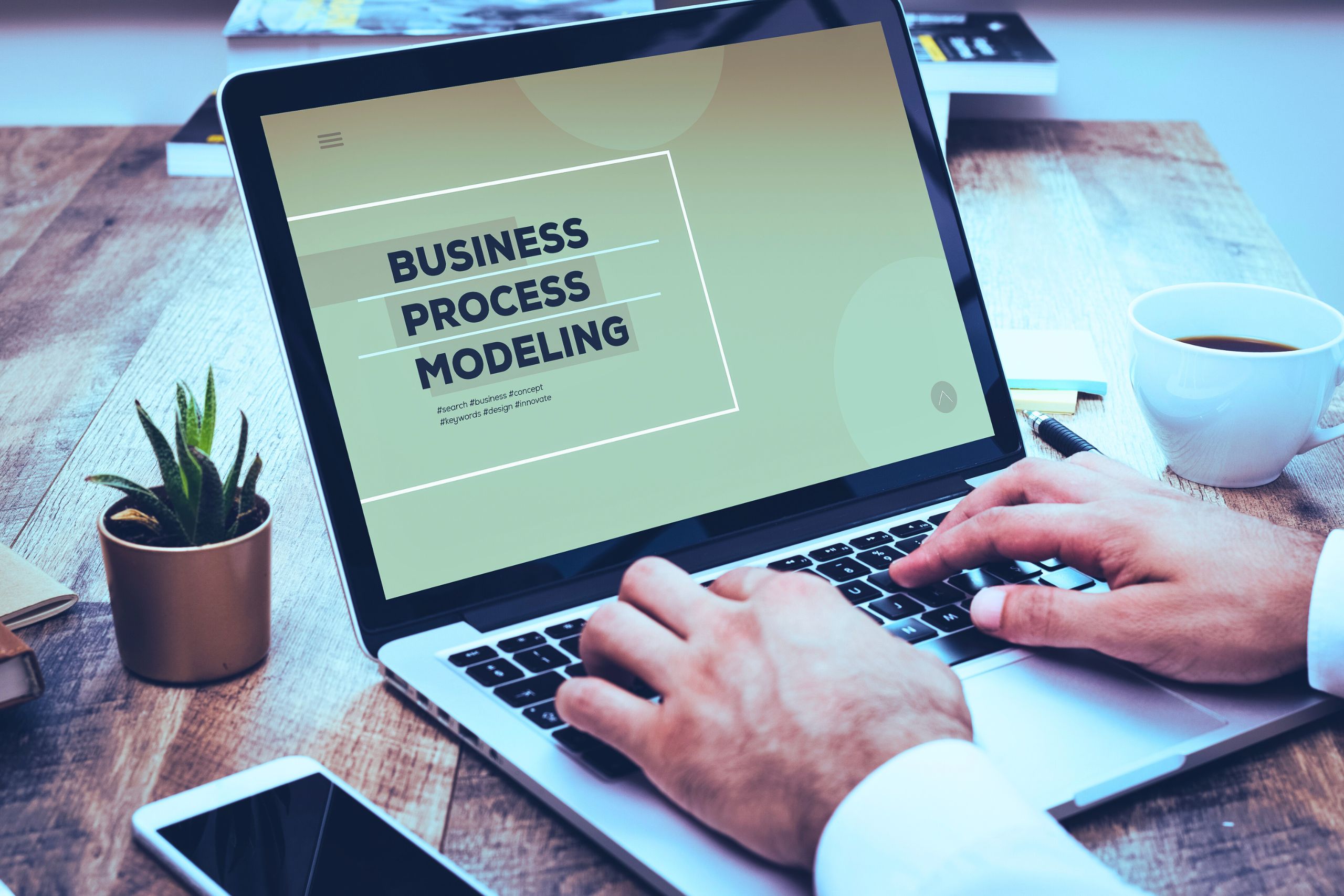Business Analysis Fundamentals: Practical Tips and Applications
Introduction
Business analysis is the process of identifying an organization's needs and developing solutions that improve its efficiency and competitiveness. This approach is essential for modern businesses because it helps organizations better understand their goals, identify growth opportunities, and address the challenges they face.
The business analyst is a key figure in the organization, acting as a mediator between stakeholders and implementation teams. He analyzes current business processes, identifies weaknesses and opportunities for improvement, and proposes solutions that align with the strategic goals of the organization. His role includes effectively gathering requirements, developing optimization models, and supporting teams in implementing these changes.
In this article you will learn about:
- Basic skills for successful business analysis: What competencies are needed for this role and how to develop them.
- Requirements gathering techniques: How to understand stakeholder needs and prioritize them.
- Business process modeling: How to visualize and optimize processes in the organization.
- Collaboration with teams: How business analysts work with project managers and other stakeholders.
- Using software tools: Which technologies can support the analysis and implementation of business solutions.
This information will help you understand the basic principles and practices of business analytics, as well as how they can be applied in various organizations to achieve sustainable success.
1. Basic Skills for Successful Business Analysis
Business analysis requires a combination of technical and soft skills that help professionals understand the complex needs of organizations and develop effective solutions. A successful business analyst must be both a good communicator and analytically minded to connect the dots between different stakeholders and data. In this section, we will look at the key competencies required for this role and how they can be applied in practice.
What Are the Basic Skills?
- Analytical thinking and problem solving
A successful analyst must be able to process large amounts of information, discover patterns, and develop practical solutions to complex business challenges. - Effective communication skills with teams and stakeholders
Communication is the key to understanding and agreeing on requirements. It involves clearly presenting ideas, active listening, and the ability to adapt your communication style to different audiences. - Skills for conducting productive conversations with stakeholders
Conducting constructive meetings is crucial for gathering requirements and setting priorities. This requires a focus on clarity and building trust.
Examples of Their Application
- Data analysis to identify trends
For example, a business analyst working for a retail company might look at historical sales data to understand seasonal fluctuations and suggest promotions or new products to meet customer needs. - Conducting workshops to gather requirements
In a real-world context, a business analyst might set up a meeting with a software development team to clarify the functionality the client expects from a new platform. By asking appropriate questions and summarizing what they hear, the analyst creates a clear requirement for the team.
These skills and their applications are the foundation of effective business analysis, helping to deliver successful projects and achieve business goals. In the next section, we will look at techniques for gathering and analyzing requirements.
2. Requirements Gathering and Analysis Techniques
Requirements gathering is a critical step in business analysis, as the quality of the information determines the success of any project. To understand and define the needs of stakeholders, it is necessary to use a systematic approach and apply the right techniques for requirements gathering and analysis. In this section, we will look at how to effectively identify and document requirements using different approaches and tools.
How Do We Understand the Needs of Stakeholders?
- Approaches such as interviews, surveys and workshops
- Interviews: Individual conversations with stakeholders allow for a deeper understanding of their expectations and challenges. For example, an interview with a team leader may reveal specific operational needs that are not visible in documents.
- Surveys: Surveys are a quick and effective way to collect information from a large number of participants, especially when it is necessary to assess opinions or preferences.
- Working meetings: Group discussions encourage the exchange of ideas and allow the team to reach consensus on project priorities.
- Skills for asking the right questions
Asking clear, specific and open-ended questions is essential to understanding the true needs of stakeholders. For example:
- "What are the main challenges you face in this process?"
- "How would you describe the ideal solution to this problem?"
Effective Use of Requirements Gathering Techniques
- Example: Conducting a conversation with a stakeholder to define project goals
Imagine a situation where a business analyst is working with a sales department to develop a new CRM system. During a stakeholder meeting, the analyst asks questions to understand what features are most important to the team and how the system can improve their daily tasks. - Using visual tools to organize and prioritize the information collected
- Mind maps: They help visualize the relationships between different requirements and concepts.
- Kanban boards: Make it easier to manage and track requirements through categorization (e.g., “new,” “in progress,” and “completed”).
- Priority diagrams: They help determine which requirements are critical and which can be implemented at a later stage.
Effective requirements gathering and analysis requires a well-thought-out approach that combines various techniques and tools. This allows business analysts to understand the real needs of stakeholders and develop solutions that meet expectations. In the next section, we will look at how modeling processes can help visualize and optimize these requirements.
3. Business Process Modeling
Business process modeling is one of the most effective ways to analyze and optimize workflows in an organization. It is a visual representation of the steps and interactions that form a particular process, and allows for the identification of inefficiencies, gaps, and opportunities for improvement.
What Is a Business Process and Why Is Its Modeling Important?
A business process is a series of tasks, actions, and decisions that lead to a specific result - whether it is production, service, or another type of activity.
- Modeling helps organizations better understand their operations and make informed decisions to optimize them.
- It provides greater transparency and clarity, which is critical for effective communication between teams.
Determining the Current State of Processes
Before proposing improvements, it is important to map the current state of business processes:
- Diagrams or schematics are created that show each step in the process.
- The time and resource costs for each task are analyzed.
- “Bottlenecks” are identified that slow down or hinder the process.
Building Visual Models for Optimization
Once the current state is clearly defined, optimization models are built:
- They show how the process can be simplified, accelerated or automated.
- Visualization highlights key stages and their dependencies, which facilitates communication with teams.
Business Process Software Tools
- BPMN (Business Process Model and Notation):
- This is a standardized visualization method that provides a clear structure and easy understanding of processes.
- BPMN is particularly suitable for complex processes that involve multiple participants and steps.
- Application example:
Imagine a customer service process. Using BPMN, all steps are visualized – from receiving a request to its resolution. Analysis shows that information is transferred manually between departments, which leads to delays. By implementing automated data transfer systems, response time is reduced by 30%.
These approaches and tools are the foundation for creating more effective business processes that support the achievement of organizational goals. In the next section, we will examine the role of collaboration between teams for successful business analysis.
4. Collaboration Between Business Analysts and Project Managers
Collaboration between business analysts and project managers is key to the successful implementation of any project. While business analysts focus on identifying and defining requirements, project managers are responsible for planning, coordinating, and controlling implementation. In this section, we will examine how effective interaction between these roles contributes to the success of projects.
What Is the Role of Interaction?
- Aligning goals and managing expectations
- Business analysts and project managers work together to provide a clear definition of project goals and ensure that all stakeholders understand what can be achieved within the existing constraints.
- Analysts provide information about requirements, while managers ensure that they are realistic with respect to time and resources.
- Examples of effective distribution of responsibilities
- Business analysts gather and document requirements, conduct meetings with stakeholders, and analyze current processes.
- Project managers create a schedule, allocate resources, and track progress to ensure the project is moving in the right direction.
- For example: In a software project, the analyst defines the system's functionalities, while the manager coordinates the work of the development team.
How to Create an Effective Collaboration Environment?
- Using information sharing technologies
- Tools like Microsoft Teams, Trello, and Jira facilitate communication and provide a platform for sharing documents, updates, and progress.
- For example: The team can use a shared dashboard in Jira to monitor the status of tasks and provide transparency for all participants.
- Establishing clear communication channels
- A clear communication structure is essential to avoid misunderstandings. This includes defining points of contact, frequency of meetings, and reporting methods.
- For example: Introducing weekly meetings between analysts and managers to discuss the current status and potential challenges.
Strong collaboration between business analysts and project managers is the foundation for effective project execution. By aligning goals, clearly assigning responsibilities, and using communication technologies, teams can ensure successful project implementation. In the next section, we will look at software tools that facilitate the business analysis process.
5. Software Tools to Support Business Analysis
Software tools play a key role in modern business analytics, enabling analysts to collect, process, and visualize data, create models, and manage projects. Using the right technologies can significantly improve the efficiency and accuracy of analytics, while facilitating collaboration between teams.
Popular Business Analysis Tools
- Microsoft 365: Data and project management
- Microsoft 365 offers a set of integrated tools like Excel, SharePoint, and Power BI that support business analysis by managing data, creating interactive visualizations, and sharing reports.
- For example: Power BI allows analysts to create interactive dashboards that summarize key business metrics.
- Tableau: Data visualization
- Tableau is a powerful visualization tool that provides the ability to analyze large volumes of data through interactive graphs and charts.
- For example: An analyst can use Tableau to show sales trends by region, making it easier to identify potential growth opportunities.
- Lucidchart: Process modeling
- Lucidchart is a visualization tool that allows the creation of diagrams, flowcharts, and business process models.
- For example: A business analyst can create a customer service process model that shows each step of the customer interaction and identifies opportunities for optimization.
Application Examples
- Data analysis to assess financial performance
- Using tools like Tableau and Power BI, analysts can visualize key financial metrics like revenue, expenses, and profit, making it easier to spot trends and potential problems.
- Example: Generate a report that shows monthly revenue growth broken down by region and customer.
- Using project management tools to track progress
- Microsoft 365 and other platforms like Asana or Jira can be used to manage project tasks, track deadlines, and coordinate between teams.
- Example: A team can use SharePoint to store and share documents, while Power Automate automates report approval tasks.
Business analytics software tools provide analysts with powerful tools for managing and interpreting data, creating models, and optimizing processes. Their proper use improves team efficiency and supports informed decision-making. In the next section, we will look at specific practical steps for implementing AI and analytics approaches in the organization's work.
6. Practical Steps for Successful Business Analysis
Successful business analysis requires a structured and consistent approach to identifying problems, setting priorities, testing solutions, and tracking their impact. Following these practical steps helps business analysts ensure that projects achieve desired results and meet the needs of the organization.
Identify the Main Business Problems
- How do you start by understanding the current challenges?
- The first step is to gather information about current business processes, outcomes, and issues. This can be done through conversations with stakeholders, analysis of historical data, and observation of the workflow.
- Example: If an organization is reporting a decline in customer satisfaction, an analyst can examine customer feedback, service times, and the quality of services provided to determine the root causes.
Use Prioritization Techniques
- How do you decide which tasks matter most?
- Once the problems have been identified, it is important to determine which tasks have the greatest impact on the organization's goals. Techniques such as the Eisenhower Matrix (urgent/important) or impact/effort analysis can help with prioritization.
- Example: If the analysis shows several areas for improvement, tasks with high potential for increasing revenue or improving the customer experience should be prioritized.
Test the Solutions
- Creating prototypes and collecting feedback
- Before implementing a full solution, it is useful to create prototypes or pilot versions to test on a small scale. This allows analysts to gather feedback, make adjustments, and minimize risks.
- Example: When implementing a new customer management system, the team can test the solution with a small group of users and use their feedback for optimization.
Tracking Results
- How to measure the success of your analysis?
- After implementing the solution, it is important to track key performance indicators (KPIs) to assess its success. This can include metrics such as task completion time, costs, or customer satisfaction levels.
- Example: If the project aims to reduce order processing time, the analyst can observe processing time data before and after implementation.
Practical steps for successful business analysis provide a clear path to identifying problems, developing effective solutions, and measuring results. Through careful planning, testing, and tracking, business analysts can contribute to the sustainable development of an organization and the achievement of its goals.
Conclusion
Business analytics is not just a tool, but a strategic approach that helps organizations achieve sustainable success in today's dynamic business environment. It combines analytical skills, technological innovation, and creativity to deliver solutions that transform the way businesses work. Whether it's process optimization or project management, business analysts are the engine behind change.
The process begins with a deep understanding of current challenges, moves through defining clear goals, and ends with implementing practical solutions. From identifying key issues to leveraging powerful tools like Microsoft 365 and Tableau, business analytics provides a framework for sustainable growth. Small steps, like collecting data and testing prototypes, lead to big results.
Whether you are a beginner in the field or a seasoned professional, applying the principles of business analytics can turn complex challenges into opportunities for success. Through process optimization and effective communication, organizations can achieve competitive advantage while simultaneously increasing customer and team satisfaction.
The Ruse Chamber of Commerce and Industry is your partner in this transformation process. We provide resources, training and practical support to help you implement best practices and innovations in your work. With our help, you can build effective teams that work in sync with technology and ensure the success of your organization.
Note: The publication was prepared with the help of generative artificial intelligence, which assisted in structuring and formulating the content. The final text is the result of the author's expert contribution, which guarantees its accuracy and practical focus.












